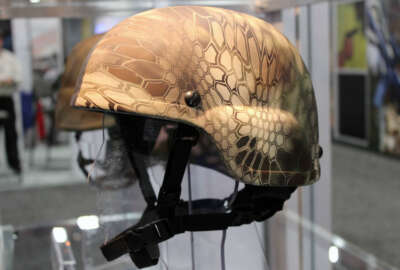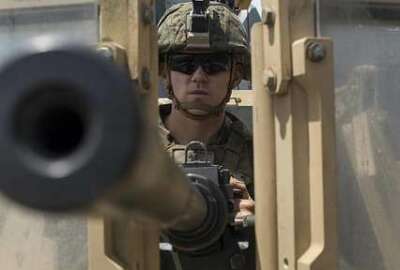
Heavy weapons may be damaging troops’ brains
Multiple shots from heavy weapons may have a bigger impact than once thought.
Best listening experience is on Chrome, Firefox or Safari. Subscribe to Federal Drive’s daily audio interviews on Apple Podcasts or PodcastOne.
As brain injuries in the NFL gain more attention, the brains of service members are under more scrutiny.
That scrutiny led to the discovery that shoulder mounted heavy weapons may be causing head trauma to troops during training.
“What we now know after doing a lot of research and based on a lot of science is some service members suffer from short term cognitive deficits from heavy weapons usage shot during training exercises,” said Lauren Fish, a research associate at the Center for a New American Security. “While these symptoms dissipate after about 96 hours, we don’t yet know the long term effects.”
The potential for brain injury from frequently used weapons like Carl Gustaf recoilless rifles is making the Defense Department rethink how it protects the brains of its troops.
There is currently no requirement to protect troops’ from blast waves even though primary blast pressure waves are mechanisms for brain injury.
CNAS made a number of recommendations on how DoD can protect troops’ heads during training.
One suggestion is to create a log of blasts troops are exposed to in order to track pressure to the brain.
The log would give troops something to show the Veterans Affairs Agency when they leave the military to prove any health issues caused by the blasts.
The logs would also help track symptoms and exposure.
CNAS also recommends considering a limit to the number of blasts troops can endure during training.
Lengthening the time between firing and putting a lifetime limit on the number of blasts a service member endures are other options.
Then there are helmets.
“Thinking about how materials, shapes, designs, even having different types of helmets for different duty positions. Maybe you have gunners and assistant gunners with a helmet that’s covering the whole of the face than just the head,” Fish said.
Covering the mouth and ear holes have been shown to protect against blast waves.
DoD has been struggling with brain injuries for years.
For troops deployed in Afghanistan and Iraq “blast exposure was the leading cause of concussion. Blast injury is the result of the rapid transition of an acoustic wave through the brain tissue. Over the last 16 years an estimated 320,000 U.S. troops, about one in five, returning from active theater have sustained a concussion and among those almost half experienced symptoms consistent with Post-Traumatic Stress or Post-Concussion Syndrome,” Dr. David W. Dodick, sports neurology and concussion program director at the Mayo Clinic, told the Senate Armed Services Subcommittee on Personnel last year.
Defense Department Director for Military Health Policy and Oversight Capt. Michael Colston told Congress the Pentagon is looking into the effects of cumulative subconcussive hits on troops. Subconcussive hits are what many medical professionals are blaming for Chronic Traumatic Encephalopathy, the disease faulted for causing violent, depressive and unpredictable behavior in former NFL players. Medical professionals think multiple hits at subconcussive force are the culprit for the disease.
“You shoot a .50 caliber that’s about half a PSI of pressure wave, a breecher you’re seeing maybe two PSI, but a breecher may see four or five hundred of those. Then certainly an IED can be something much higher than 10 or 15 [PSI]. We’re very worried about what we see downstream,” Colston said.
“There’s a lot of crossover in lesions that we see in the brain, but this particular lesion was at density junctions. In other words, right where you would deposit injury from a blast wave. A blast wave isn’t just running 25,000 feet a second through the brain there’s also a coup, contrecoup injury where your brain is sloshing around in your skull and obviously fragments. There’s all kinds of work to do in the research realm that we are working on assiduously and we need to do it fast because certainly the next battle is out there,” Colston said.
Copyright © 2025 Federal News Network. All rights reserved. This website is not intended for users located within the European Economic Area.
Scott Maucione is a defense reporter for Federal News Network and reports on human capital, workforce and the Defense Department at-large.
Follow @smaucioneWFED




